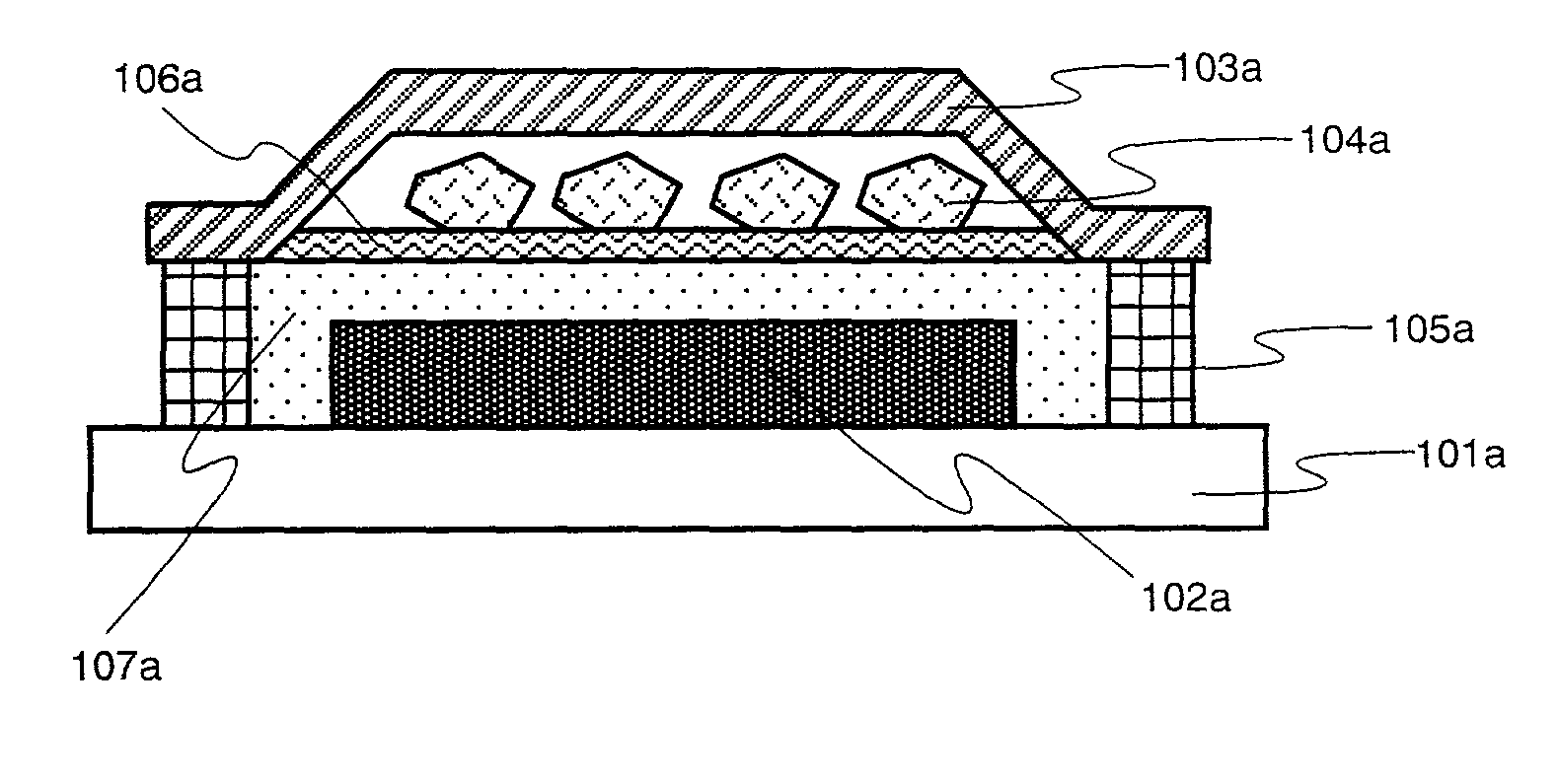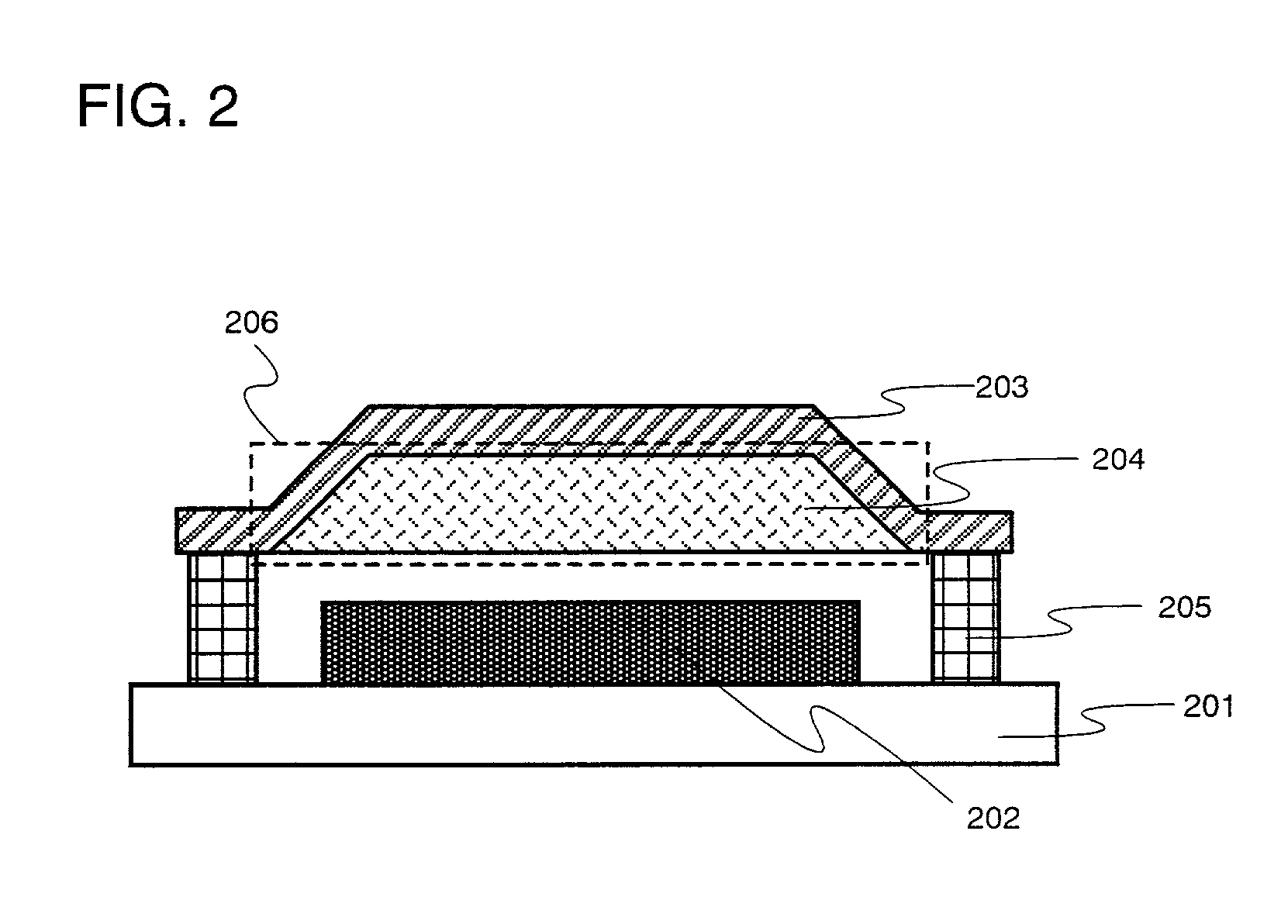Light emitting device
a technology of light emitting device and discharge tube, which is applied in the direction of instruments, discharge tube luminescnet screens, lighting and heating apparatus, etc., can solve the problems of promoting element degradation, difficult to have complete cut off from moisture and oxygen, and changing film quality and material itsel
- Summary
- Abstract
- Description
- Claims
- Application Information
AI Technical Summary
Problems solved by technology
Method used
Image
Examples
embodiment 1
[0075] [Embodiment 1]
[0076] A specific example of a light emitting device in which organic EL elements are formed within a container cut off from the atmosphere, and in addition, a bulk porous body of a chemical absorption drying agent is sealed within the container is shown in embodiment 1, as shown in FIG. 1A in the embodiment mode of the present invention. FIG. 4 shows the structure. Note that the alkaline-earth metal compound calcium oxide (CaO) is used as the drying agent.
[0077] First, a film is formed on a glass substrate 401 by sputtering ITO as a transparent electrode. This is used as an anode 402. Next, for film formation of an organic EL layer 403, the aromatic amine compound shown by Chem. 2 below (hereafter referred to as -NPD) which is formed with a thickness of 50 nm as a hole transporting layer 403a, and the aluminum chelate complex expressed by Chem. 3 below (hereafter referred to as Alq.sub.3) which is formed with a thickness of 70 nm as an electron transporting and...
embodiment 2
[0082] [Embodiment 2]
[0083] A specific example is shown in Embodiment 2 of a light emitting device in which a chemical absorption drying agent is formed into a porous film shape within a container cut off from the atmosphere, and organic EL elements are formed within the container, as shown in FIG. 2 in the embodiment mode of the present invention. The structure is shown in FIG. 5. A sol-gel method is used as the method of forming the porous film. The alkaline-earth metal oxide barium oxide is used as the porous film material.
[0084] First, a film is formed on a glass substrate 501 by sputtering ITO as a transparent electrode. This is sued as an anode 502. Next, for film formation of an organic EL layer 503, .alpha.-NPD formed with a thickness of 50 nm as a hole transporting layer 503a, and Alq.sub.3 formed with a thickness of 70 nm as an electron transporting and light emitting layer 503b, are laminated by vacuum evaporation. In addition, ytterbium is formed into a 400 nm thick film...
embodiment 3
[0087] [Embodiment 3]
[0088] In this embodiment, a light emitting device including an organic EL element disclosed in the present invention will be described. FIG. 6 is a sectional view of an active matrix type light emitting device using the organic EL element of the present invention. Incidentally, although a thin film transistor (hereinafter referred to as a TFT) is used here as an active element, a MOS transistor may be used.
[0089] Besides, although a top gate TFT (specifically, a planar TFT) is exemplified as a TFT, a bottom gate TFT (typically, an inverted stagger TFT) can also be used.
[0090] In FIG. 6, reference numeral 601 designates a substrate, and the substrate transparent to visible light is used here. Specifically, a glass substrate, a quartz substrate, a crystallized glass substrate, or a plastic substrate (including a plastic film) may be used. Incidentally, the substrate 601 also includes an insulating film provided on the surface of the substrate.
[0091] A pixel porti...
PUM
 Login to View More
Login to View More Abstract
Description
Claims
Application Information
 Login to View More
Login to View More - R&D
- Intellectual Property
- Life Sciences
- Materials
- Tech Scout
- Unparalleled Data Quality
- Higher Quality Content
- 60% Fewer Hallucinations
Browse by: Latest US Patents, China's latest patents, Technical Efficacy Thesaurus, Application Domain, Technology Topic, Popular Technical Reports.
© 2025 PatSnap. All rights reserved.Legal|Privacy policy|Modern Slavery Act Transparency Statement|Sitemap|About US| Contact US: help@patsnap.com



